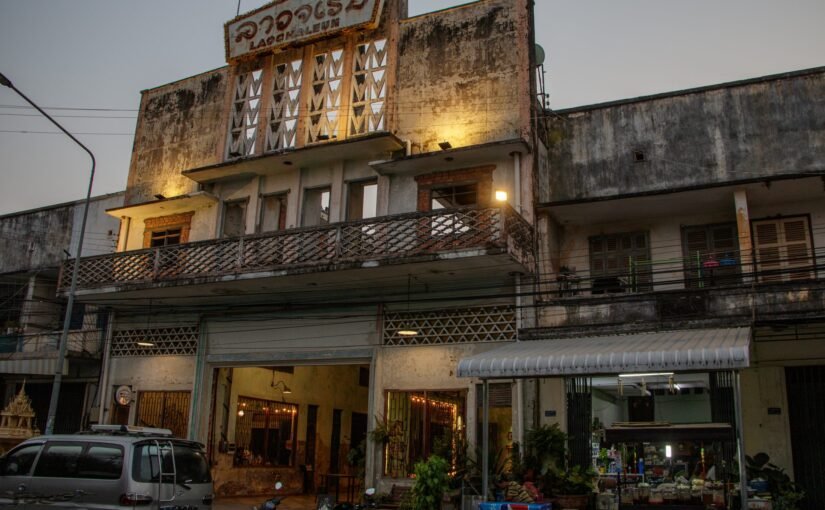In Lao, cinemas are called by the same phrase as shadow theater. This can make some confusion in understanding the names in the English translation on Google Maps. But there is also some blue-eyed symbolism in this. It is interesting that when a few years ago the city was decorated with street art, on the wall of one of the cinemas there were pictures depicting shadow theater puppets – the heroes of the ancient Lao epic “San Sinsai”.
The book by Thai writer Lek Bai Miang, who grew up in Savannakhet and fled with his family from the new regime to Thailand in 1975, is called “Rong Ngao-Lao Charoen Rama” – after the largest cinema in Sawannakhet. He tells:
“In the early 1970s, Savannakhet was a very civilized city, and the neighboring Thai Mukdahan was just a small provincial town. Thais came to Savannah to buy fashionable clothes, watch movies and drink in bars. American soldiers came here from a neighboring military base, hung out, we drank alcohol, listened to music, we grew up in such an atmosphere. Looking later on the scene in the Saigon bar in “The Deer Hunters”, I recognized the bar of our cinema in Savannah.
As kids at the time, we sold snacks in front of the cinema and went to see movies almost every day. Cinema is the world of happiness. Watching a movie is like getting lost in a fantasy world for 2 hours, giving us dreams and hope for life.”
After the arrival of the communist regime, the film industry in Laos practically ceased, the government invested only a few propaganda films in 35 years.
The Lao Chaleun Rama Cinema, built in 1960s western modernist style in the center of the old colonial part of town, is a block-sized complex that includes residential wings on the sides and a courtyard with a dance floor, bars and a large cinema hall. People still live in residential buildings, although the wings located in the courtyard burned down or were destroyed. The cinema has been closed for a long time. Only recently, some of the premises around the cinema hall have been used as a cafe and even an exhibition hall. True, several times the cinema was opened to the audience. In 2008, the first independent Lao film “Sabaidi, Luang Prabang” was shown here. And in 2019, the city began to hold the festival “Savan Fan Fest” and again the hall started working to show films, including Thai ones. But the covid knocked down the festival and today the cinema is closed again. A large evening food court has recently settled in his backyard.
The cinema is literally opposite it – “Khounsavan” – an even more expressive example of architecture of the 60s.. There are rumors that its owner was a Chinese of Laotian origin, who built and named it after his daughter. In 1975, their family moved to Paris. It worked until 1991, but then, just like Lao Chaleum, it was closed and fell apart until recently.
In the small town Xeno, 30 kilometers from Savannakhet, a large cinema was also built at that time. In this town since French times there was a large military base. Since the 1960s, it has been occupied by Americans and parts of the Laotian government army, trained by American specialists. Apart from a few barracks and the ruins of a cinema, we were unable to find traces of the colonial and post-colonial period in the city.
The building is built in the same Western modernist style of the 60s as the cinemas in Savankheti. The hall is two-storeyed, with a balcony on which chairs have been preserved. It is interesting that the rows are numbered with the letters of the Latin alphabet, which is now almost never found in the provinces. And the numbering of seats is divided into even and odd from different sides of the aisle: on the left – 1, 3, 5, on the right – 2, 4, 6, etc. It is in an even more deplorable state than the Savannakhetian ones. They write that a few years ago he had a tenant who arranged a playground for a sports bumpington on the first floor of the hall and rented it out to those who wanted to play. But now there is nothing there but dust and thickets of cobwebs, and on the site in front of the entrance there is a spontaneous garbage dump.
